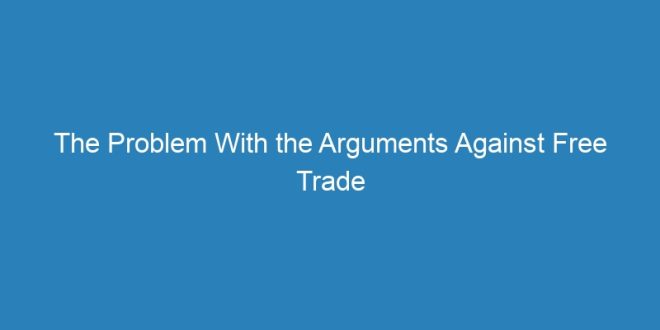Recently, several editorials have caught my attention. One passage argues that the benefits of free trade for US consumers come at the expense of US workers. The second editorial suggested that trade is widening the income inequality in the United States. Both editorials only promote anti-free trade sentiment. However, none of the authors offered any solution that would help solve their problem.
Everyone likes low prices, but what is the actual price you pay for these cheap items? … we need to stop this false “free trade” agreement so that the average American, not a multinational corporation, will benefit from trade policy. (See August 1, 2013, Who Will Get Rich from Free Trade, Crisis Economy)
I agree that everything must be done to ensure that international trade policy benefits the average American. What the article did not say was that President Barack Obama fought hard in 2011 to ensure that the free trade agreement was not abandoned. While President Obama is asking Congress to approve long-term trade agreements with Colombia, Panama and South Korea, he is also working on an update to the Trade Adjustment Assistance Act (TAA). TAA provides financial support to workers expelled by foreign trade, especially those in the manufacturing industry. However, the TAA has been criticized by Congressmen for wasted costs, in addition to the unemployment benefits guaranteed to all American workers.
If you end a free trade agreement, your only option is to return to protected trade. Protectionist policies include high tariffs and quotas on imported goods. Other countries have their own protection trade policies that limit access to technology, medicine, research and other goods and services that may not be produced domestically but can be used. A more balanced debate on ending free trade will also include discussions on the costs of protectionist policies. (See OECD Report on the Cost of Protected Trade Principles)
President Obama publicly lamented the growing economic inequality in the United States. At the same time, he is promoting a new Trans-Pacific trade agreement in addition to the trade agreement he won in 2011. Obviously, there is no contradiction here, but increased economic research has shown the negative effects of tariff cuts. Barriers to manufacturing workers and their communities.
International trade cannot be separated as the only explanation for increasing US economic inequality. Economic inequality persists regardless of the trade policies adopted by the United States. Minorities and women, in particular, face many barriers that make it difficult to achieve the same earning power as white men. Understanding income inequality in the United States requires consideration of other systematic and structural factors, such as quality education, vocational training, and unequal access to health care. Condemning free trade ignores the reality of domestic policy that has perpetuated the problem domestically before the beginning of the 21st century.
Part 2, like Part 1, does not provide a real policy solution to the US economic situation.
In short, the author is right that free trade produces winners and losers. However, it is important not to simply label all domestic issues as one of the consequences of free trade. Rather than simply criticizing free trade, we offer solutions and offer viable proposals that can be discussed at the free trade negotiation table so that the United States can compete and benefit all Americans. That would be useful.
 KRETENG.COM Website Review Bisnis, Tempat dan Harga Produk Terbaik di Indonesia
KRETENG.COM Website Review Bisnis, Tempat dan Harga Produk Terbaik di Indonesia

